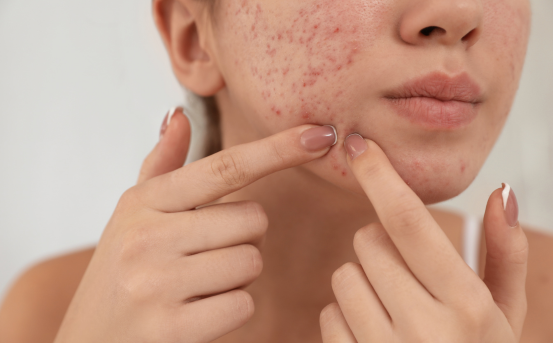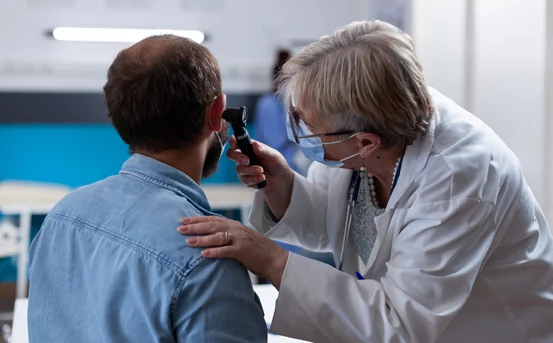Subcision for Acne scars treatment can have a lasting impact on one’s self-confidence, especially when they leave behind deep and stubborn marks. While many topical treatments and procedures exist, one method has shown promising results for certain causes of subcision for acne scars treatment. Subcision is a minor surgical technique used to treat depressed or atrophic scars by releasing the fibrous bands tethering the skin. But what makes someone a suitable candidate for subcision? What causes or factors lead dermatologists to recommend this procedure over others?
Acne is one of the most common skin concerns affecting millions of people worldwide, especially during adolescence and early adulthood. While many eventually grow out of active breakouts, the aftermath persistent acne scars can be far more difficult to treat. These scars not only alter the texture and appearance of the skin but also deeply affect one’s self-confidence and emotional well-being. For those dealing with deep, indented, or tethered scars, traditional topical treatments or even resurfacing lasers often fall short.
What Is Subcision for Acne Scars Treatment?
Subcision for acne scars treatment is a minimally invasive dermatological procedure that involves inserting a fine needle or special blade under the skin to break the fibrous bands that pull down the scar tissue. Once released, the skin is allowed to rise, improving the appearance of depressed scars. Additionally, subcision triggers a natural healing response, promoting new collagen formation in the treated area.
This treatment is especially effective for rolling and tethered scars types of acne scars that cause a wave-like or sunken appearance due to being anchored down by fibrous tissue.
Causes of subcision for acne scars treatment
- Presence of Rolling Scars
One of the primary causes of subcision for acne scars treatment is the presence of rolling scars. These scars appear as broad depressions with sloping edges and are often caused by long-term inflammatory acne. Unlike boxcar or ice pick scars, rolling scars are typically caused by fibrous bands tethering the skin to the underlying tissue. Subcision effectively breaks these fibrous bands, allowing the skin to lift and smooth out the uneven surface.
- Tethered Scars That Don’t Respond to Topical Treatments
When acne scars are tethered deeply, meaning they are physically held down by strands of scar tissue, topical treatments and lasers alone usually offer limited improvement. If creams, serums, micro needling, or laser resurfacing haven’t shown significant results, it could be due to mechanical tension caused by fibrotic attachments. It directly targets the underlying cause the tethering tissue something no topical can achieve.
- Scars with Loss of Volume or Depression
Scars that look sunken or show volume loss often indicate damage below the skin’s surface. This can be a result of severe cystic acne where the skin and fat tissue have been damaged, leaving a hollowed appearance. By freeing the skin and stimulating collagen production, subcision helps restore volume and lift to the scarred area. It’s often combined with fillers or PRP (Platelet-Rich Plasma) for enhanced results.
- Skin Non-Responsive to Other Acne Scar Procedures
If patients have tried laser treatments, chemical peels, or micro needling with minimal improvement, it may signal that their scars are deeply bound and resistant to surface-level procedures. It works below the skin, making it ideal for stubborn scars that haven’t responded to surface-level treatments.
- Multiple Tethered Scars in a Localized Area
When patients have clusters of depressed or bound scars in a specific area like the cheeks or temples a targeted subcision procedure can address multiple scars efficiently in a single session. The technique allows dermatologists to work across a wide zone under the skin, treating numerous scars with just a few needle entry points.
- Scarring Resulting in Skin Texture Irregularities
Many patients seek subcision when their acne scarring causes uneven skin texture that’s noticeable in natural light or when the skin is stretched. This is common with scars that lie under the surface but pull the skin inward. Releasing the fibrous strands allows the skin to return to a smoother texture and more uniform appearance.
- Candidates with Healthy Skin Healing Capability
Subcision is usually recommended for people who have good healing capability and no history of keloid formation. This is because the treatment involves controlled trauma that needs the body’s natural healing response to build collagen and repair the site. When the skin heals well, subcision leads to long-term improvements in scar appearance and texture.
- Desire for Minimally Invasive, Cost-Effective Treatment
Some acne scar treatments can be expensive or require multiple sessions, such as CO2 lasers or RF micro needling. For patients looking for a minimally invasive yet effective option, subcision is a practical choice. It’s often performed in-office, requires little downtime, and provides visible improvement even after one session, especially when combined with other treatments.
- Psychosocial Distress Due to Acne Scars
While not a direct medical cause, emotional and psychological distress from facial scarring is a valid reason to pursue treatment. Subcision offers hope to individuals who are self-conscious about their appearance. It offers a targeted approach with real, visible results, which can significantly improve confidence and quality of life.
Combination Therapy Needs
Subcision is often used as a preparation step for combination treatments like dermal fillers, PRP, micro needling, or laser resurfacing. In cases where a patient’s scars require a multi-step approach, subcision serves as the foundational procedure. It sets the stage for other treatments to work more effectively by lifting the skin and improving its response to collagen-inducing therapies.
Who Should Not Choose for Subcision?
While causes of subcision for acne scars treatment is highly effective, it’s not suitable for all acne scar types. It is not ideal for :-
-
Superficial or shallow scars
-
Ice pick scars (which are better treated with TCA CROSS or punch excision)
-
Active acne or skin infections
-
Patients prone to keloids or abnormal scarring
-
Individuals on blood thinners or with poor wound healing
A dermatologist should assess your skin condition and medical history before recommending subcision.
Conclusion
If you have deep, rolling, or tethered acne scars that have resisted other treatments, causes of subcision for acne scars treatment might be the solution you’ve been waiting for. It directly addresses the root cause the fibrous bands under the skin and stimulates natural healing. When done by a trained dermatologist and combined with other techniques, it can lead to dramatic and lasting improvements.























